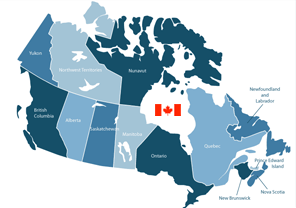Injections used to treat ACUTE Migraine
Sumatriptan (Imitrex)
Imitrex® (sumatriptan succinate injection) is a serotonin 5-HT1 HT1B/1D receptor agonist used for the acute treatment of migraine headaches. 1
Types of Imitrex include:
- taken by mouth (tablet)
- in the nose (as a nasal spray)
- by injection under the skin (subcutaneous). This medication is most effective when used injected under the skin. It treats migraine pain as well as other symptoms such as nausea, sensitivity to light and sound. Effects generally occur in 10-15 minutes. 1
The injection version comes with an auto injector. Your physician can teach you how to self-inject.
The recommended adult dose of sumatriptan injection is a single 6 mg subcutaneous (under the skin) injection into the outside of the thigh or in the upper arm, at the first sign of a headache. 2
As with all triptans side effects are generally chest tightness, drowsiness, tingling, spinning sensations, others.
Visit Imitrex for more information.
Dihydroergotamine (DHE)
Dihydroergotamine (DHE) belongs to a family of medications called ergot alkaloids. It is used to help relieve the pain of migraine headaches. It may also be useful in patients who are experiencing a prolonged migraine attack. 3 It has been available for many years.
Some emergency rooms use DHE injection to treat migraines. When used as an intravenous (IV) injection the onset of action can be very fast.
Dihydroergotamine (as an injection), is occasionally used in Canada. It is used frequently in the US. It is commonly used in headache specialty centres in the U.S.
Because DHE can cause nausea or vomiting, it should be given together with an anti-nauseant (for example metoclopramide injection). It should not be used in people with heart problems, peripheral vascular disease or in pregnant women.
For more information visit Rexall.
Injections used to PREVENT Migraine attacks
Botulum Toxin (onabotulinumtoxinA) - Botox®
Botox® (onabotulinumtoxinA) is a prescription medication that is injected into muscles and indicated to prevent chronic headaches. Botox® has been approved for treating headaches that are present more than 15 days per month. It is used to prevent headaches in adults with chronic migraine who have 15 or more days each month, with headache lasting 4 or more hours each day, in people 18 or older.
Also referred to as Botulinum Toxin, it is a neurotoxin produced by Clostridium botulinum, the bacteria that thrive in conditions without oxygen (ie: anaerobic state) and may produce severe food poisoning called Botulism. This is the toxin that paralyzes nerves by blocking the release of a substance called acetylcholine which blocks nerve signals to muscles and prevents them from contracting thereby causing relaxation. The toxin is a poison only if ingested with a spoiled food.
However, for medical use, Botox® is injected directly into muscles rather than absorbed through the stomach. The injected dose is a fraction of what causes botulism. No single case of Botulism related to Botox® has ever been reported. 4
View the entire document here.
by Brent Lucas, BA (Psych) Headache Researcher, Help for Headaches, London, Ontario
Updated October 2015 medically by Dr. Michael Gofeld, MD., DEAA, FIPP Associate Professor, University of Toronto, Staff Physician, Department of Anesthesia, St. Michael's and Women's College Hospitals, Toronto, Ontario, Canada
New - Calcitonin Gene-Related Peptide (CGRP) antagonist injections
What is CGRP?
CGRP stands for calcitonin gene-related peptide, and it is a protein that is released around the brain. When CGRP is released, it causes intense inflammation in the coverings of the brain (the meninges), and for most migraine patients, causes the pain of a migraine attack. In fact, if you give CGRP by an intravenous method to a person that suffers from migraine (that currently does not have a migraine) to a person with migraine, within 4 hours most of them will get a migraine. That's the basis of all the new treatments. 5
What are anti CGRP treatments and how do they Work?
Anti CGRP treatments called monoclonal antibodies, bind to calcitonin gene-related peptide (CGRP) to block the pain experienced by migraine sufferers. CGRP causes headaches in migraine patients, and we know that CGRP levels are elevated during migraine. Therefore targeting CGRP makes perfect sense. 6
Studies show anti CGRP treatments often benefit migraineurs who previously failed to respond to preventive therapy
The first monoclonal antibody to be approved is called erenumab (Aimovig®). It was studied in people who had already had two to four preventative medication failures, and I mean complete failures. These were people that had taken antidepressants, anti-epilepsy drugs, anti-blood pressure drugs that were supposed to be effective for migraine prevention, and they had not worked at all. Then, they were given the monoclonal antibody and it seemed to work. The other monoclonal antibodies are also being studied for people who have had a lack of success with their previous treatments, and they also had very good response in terms of likelihood of success, even though people have had a lack of success with other treatments. 7
Aimovig® (erenumab)
Aimovig (erenumab) is the first calcitonin-gene related peptide (CGRP) antagonist approved in Canada. It is indicated for the preventive treatment of migraine in adults that suffer migraine on at least 4 days per month, or more.
This injection was specifically designed for migraine patients that experience 4 migraine days per month.
The recommended dose of Aimovig® is 70mg once monthly at 140mg (given as 70mg on 2 consecutive days per month. It is given subcutaneously (under the skin) in the abdomen, thigh or upper arm.
The most common side effects include injection site reactions (itching, redness, swelling, pain), constipation, muscle spasms, itching and rash. Note: the needle cover of the pre-filled syringe and autoinjector contains dry natural rubber, which may cause allergic reactions in patients sensitive to latex.
In one 3 month study, people taking Aimovig experienced 6-7 fewer monthly migraine days on average (vs.~4 for placebo). 8
See www.aimovig.com for more information
For those experiencing financial difficulty, your healthcare professional can locate product support and services for their patients through the Novartis GO Program (1-855-745-5467) or by your physician emailing
9
It is best to have your physician email as they will very likely have medical questions.
Emgality® (galcanezumab)
Emgality® (galcanezumab) is also a calcitonin-gene related peptide (CGRP) antagonist indicated for the preventive treatment of migraine in adults, for those that suffer migraine on at least 4 days per month. 10
It is a preventative injection that is used monthly to reduce the number of migraines patients experience.
In a 3-month study of adults with 15+ headache days per month, 28% of patients had their monthly migraine days cut in half or more with Emgality® compared to 15% who took placebo. 11
It comes as 120 mg per ml single-dose prefilled syringe or pen. The recommended initial (loading) dose is 240 mg (given as 2 injections of 120 mg), followed by once monthly doses of 120 mg (one injection). It is given subcutaneously (under the skin) in the abdomen, thigh, back of upper arm or buttocks.
More common side effects include injection site reactions (itching, redness, swelling, pain), constipation, dizziness, itching and rash.
A Lilly Patient Support Program (PSP) was activated on Monday, October 7, 2019
Through this PSP, Canadian patients will receive Emgality at no cost if they meet the eligibility criteria of at least 8 migraine headache days/month and previous failure on 2 preventive medications, assuming they are prescribed Emgality® according to the Canadian Product Monograph. The LillyPlus™ Migraine PSP will also support Canadian patients receiving Emgality® with injection training. 12
View Emgality Patient Brochure
View Emgality PSP Changes
Visit Lilly.ca then click on Emgality for more information.
Ajovy® (fremanezumab)
Available in the U.S. COMING in Canada
Ajovy® (fremanezumab) is an injectable prescription medicine used for the preventive treatment of migraine in adults. 13
It is a CGRP medication that is indicated for patients with chronic migraine, who experience headaches on 15+ headache days per month.
It comes in quarterly or monthly injections. There are 2 dose amounts: 225 or 675 mgs.
A Patient Support Program (PSP) will be available after approval. 14
Note: Please view our CGRP page and table on our website here.
Note: Dr. Rigmor Jensen of the Danish Headache Centre in Copenhagen, Denmark remarks on the new CGRP medicines, and she suggests "the benefits with all of these drugs are their ability to reduce the number of monthly migraine days. The most common side effects are pain and reactions at the injection site. They are indicated for the prophylaxis (prevention) of migraine in adults who have at least 4 migraine days per month." 15
Additional medical edits courtesy of Irene Worthington, B.Sc.Phm (co-author of "Canadian acute and prophylactic migraine guidelines"). Pharmacist (retired) Sunnybrook Hospital, Toronto, Ontario
REFERENCES
- GlaxoSmithKline, sumatriptan succinate injection (Imitrex®)
- Rexall Drugs, recommended adult dose - sumatriptan injection
- Rexall Drugs, Dihydroergotamine (DHE)
- Botox injections, Dr. Michael Gofeld, Anesthesiologist, St. Michael's Hospital, Toronto, Ontario
- American Migraine Foundation, Dr Stewart Tepper, "What are CGRP Treatments?"
- Teva Innovation Canada, "What are anti CGRP Treatments?"
- Canadian Headache Society/Migraine Canada, CGRP Antibodies for Migraine, Fact Sheet
- Aimovig® (erenumab) Whast is Aimovig? www.aimovig.com
- Novartis GO Program, Patient Support Program (PSP)
- Lilly Canada, Emgality (galcanezumab), "What is it?"
- Lilly Canada, Emgality 3 month study
- Emgality, Patient Support Program (PSP)
- Teva Innovation Canada, "What is Ajovy? "
- Ajovy, Patient Support Program (PSP)
- Danish Headache Centre, Copenhagen, Denmark, Dr. Rigmor Jensen - professor

